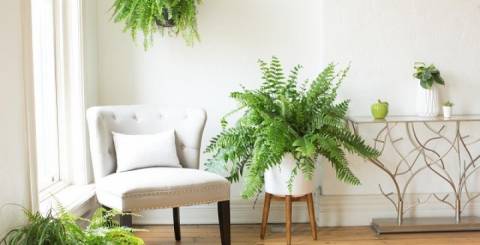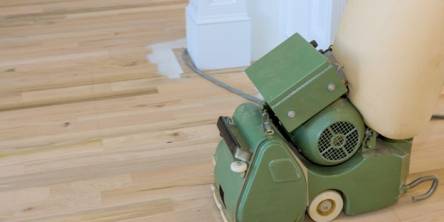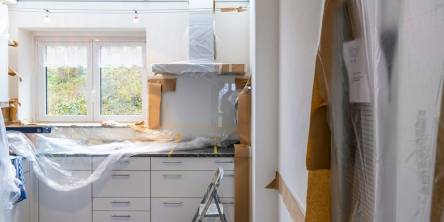What Are the Benefits of Proper Boston Fern Care?

Plants can improve the home environment by offering numerous physical, mental, and aesthetic benefits. They naturally clean the air, remove pollutants such as formaldehyde and carbon dioxide, and release oxygen, improving indoor air quality. Plants also help regulate humidity, making indoor spaces more comfortable and healthier for respiratory systems.
Boston Fern is a popular houseplant with lush green branches that bend gracefully, giving it a stylish look. In suitable conditions, it can grow both indoors and outdoors. It is commonly seen hanging in baskets, decorating balconies, and adding greenery to indoor spaces. Its delicate, feather-like leaves make it popular among plant lovers.
Growcycle is the top-rated place to find the necessary tools and tips for Boston Fern care and growth. It makes growth and care easy even for new gardeners and increases the beauty of indoor spaces.
Origin and Features of Boston Fern
Boston Ferns come from tropical and subtropical regions worldwide, including South America, Africa, and Polynesia. In the nineteenth century, they were first cultivated as ornamental plants, but due to their adaptability and aesthetic appeal, they have since become everyday items.
The plant features long, arching branches that can grow up to 2-3 feet long. Each branch has small, finely divided leaflets, creating a soft, textured appearance. The fern thrives in humid conditions, making it an ideal plant for bathrooms, kitchens, or greenhouses. Additionally, Boston Fern acts as a natural air purifier, filtering out toxins and improving indoor air quality.
Boston Fern in Home Decor
Boston Fern is a versatile plant that works well with various indoor styles. Its beautiful ferns can be seen in:
1. Hanging Baskets: It is ideal for balconies or living rooms, where the foliage spreads wonderfully.
2. Tabletop Displays: Smaller ferns can be placed on tables, shelves, or counters.
3. Bathrooms: The naturally humid environment helps the plant thrive.
4. Terrariums: Boston Fern can be included in closed terrariums to create a mini rainforest ecosystem.
Benefits of Growing Boston Fern
Its lush, feathery fronds and ability to thrive indoors make it a popular choice for homes, offices, and gardens. Here are the key benefits of growing a Boston Fern:
Air Purification
Boston Fern is known for its exceptional ability to improve indoor air quality. It naturally cleans the air by absorbing harmful toxins and pollutants, such as Formaldehyde, Xylene, and Toluene. By filtering these pollutants, Boston Fern makes the living environment clean and healthy, ideal for homes with limited ventilation or urban settings.
Increases Humidity
One of the Boston fern's vital benefits is its ability to regulate humidity through transpiration. The fern releases moisture through its leaves, increasing indoor humidity levels.
This is especially useful in dry regions or during the cold season, when heaters reduce moisture in the air. It also helps remove problems of dry skin, itchy eyes, and respiratory issues caused by low humidity.
Non-Toxic and Pet-Friendly
Unlike many common houseplants, the Boston Fern is non-toxic to pets. This makes it safer for homes with cats, dogs, or other animals that may eat plants. Pet owners can enjoy the beauty of Boston Fern without worrying about accidental poisoning or harm to their furry friends.
Mental Well-Being
Growing a Boston Fern can have a calming and stress-relieving effect. Its vibrant green foliage brings a sense of connection to nature, helping to reduce stress and anxiety, improve mood, promote emotional well-being, and increase focus, creativity, and productivity, especially in workspaces or study areas.
Natural Noise Reduction
The dense foliage of Boston Fern can absorb and reduce background noise, making it an ideal addition to busy homes or apartments. The fern reduces sound vibrations, creating a calmer, more peaceful environment.
Easy to Grow and Maintain
Boston Fern is relatively low-maintenance once its basic needs are fulfilled, making it a suitable plant for beginners and experienced gardeners. With proper care, including indirect light, regular watering, and high humidity, occasional fertilization can thrive indoors or outdoors, bringing beauty to the place year-round.
Eco-Friendly and Sustainable
Growing Boston Fern is an eco-friendly way to improve indoor spaces. As a living plant, it contributes to a sustainable environment by absorbing carbon dioxide and releasing oxygen, helping to balance indoor air quality naturally.
How to Care for Boston Fern
Boston Fern requires attention to its natural habitat conditions. Here are detailed guidelines for ensuring this lovely plant's health and longevity:
1. Light Requirements
It can thrive in indirect, filtered light. It prefers bright but diffused light conditions, similar to those found on a forest floor under the shade of trees.
● Indoors: Place the fern near a north or east-facing window where it can receive morning sunlight or filtered light throughout the day. Avoid direct sunlight, as it can harm the leaves and cause browning.
● Outdoors: If the fern is grown outdoors, place it in a shaded or partially shaded area, such as under a tree.
2. Watering
Watering is critical for Boston Fern care. These plants prefer consistent moisture but do not tolerate waterlogged soil. Water the fern when the soil's top 1-2 inches feel dry. Typically, this means watering 2-3 times a week in the growing season and reducing watering in the winter.
3. Soil Requirements
The ideal soil for Boston Fern is well-draining, rich, and slightly acidic. A mixture of peat moss, perlite, and potting soil creates the perfect environment. A pH range between 5.0 and 6.5 is ideal. Select containers with holes to drain to keep water from standing at the bottom and causing root rot.
4. Temperature and Humidity
Being a tropical plant, Boston Fern thrives in warm and humid conditions. During the day, keep the plant between 65°F and 75°F and avoid temperatures below 50°F, as it is sensitive to cold. Boston Fern requires humidity levels above 50%. Dry air can lead to browning leaves.
5. Fertilization
Boston Fern has moderate feeding needs. Regular fertilization during the growing season will help the plant thrive. Use a balanced liquid fertilizer diluted to half-strength. Provide fertilizer every 4-6 weeks during the spring and summer. Lessen the fertilization in the fall and cold season when the plant's growth reduces.
6. Pruning and Maintenance
Regular maintenance helps keep Boston Fern looking lush and healthy. Remove dead, yellow, or damaged branches to encourage new growth and improve the plant's appearance. Repot the fern every 1-2 years or when it outgrows its container. Choose a slightly larger pot and fresh soil during repotting.
FAQs
Can a Boston Fern be kept outside?
Yes, Boston Fern can be grown outdoors in shady areas with high humidity and mild temperatures. It is ideal for porches, patios, or shaded garden beds. However, it should be protected from direct sunlight, frost, and harsh winds.
Is Boston Fern safe for pets?
Yes, Boston Fern is non-toxic to cats, dogs, and other pets, making it a safe choice for households with animals.
How big does a Boston Fern get?
When provided with the right conditions, Boston Fern can grow up to 2-3 feet wide and 2-3 feet tall, with its branches expanding gracefully.
The Bottom Line
The Boston Fern is an excellent houseplant known for its lush, feathery leaves and air-purifying features. Despite its specific care requirements, such as high humidity, indirect light, and consistent watering, it provides owners with visual and health benefits.
Similar Articles
Refresh your driveway without replacing it. Discover budget-friendly cleaning, repair, resurfacing, and design ideas that boost curb appeal and durability.
We all know that roofs don’t last forever, but how do you know when it's really time to replace yours? After all, your roof is out of sight, out of mind, right?
As winter settles in and temperatures drop, families across the country brace themselves for the inevitable spike in energy bills.
Wooden floors have long been the subject of admiration for their classic beauty, natural warmth, and strength.
When it comes to giving your home a fresh coat of paint, most homeowners focus on choosing the perfect color and finish.
The holiday season transforms neighbourhoods into glowing wonderlands, but today's homeowners are moving beyond the traditional approach of simply stringing lights wherever they fit.
City homes face a constant challenge around outdoor space. Gardens are small or nonexistent, balconies are narrow, and any outdoor area feels precious.
Anyone who's worked in a commercial kitchen knows they operate with an efficiency that home kitchens rarely match.
When you want to transform your home with a complete makeover, you must find the best ways to save money. Let's check some cost-saving tips for renovating.









